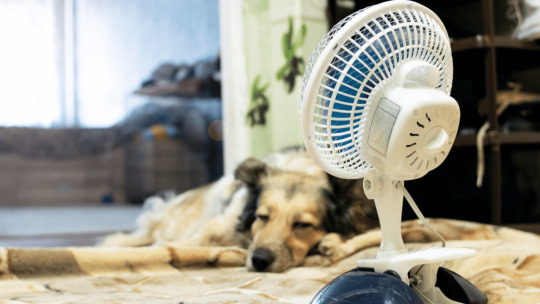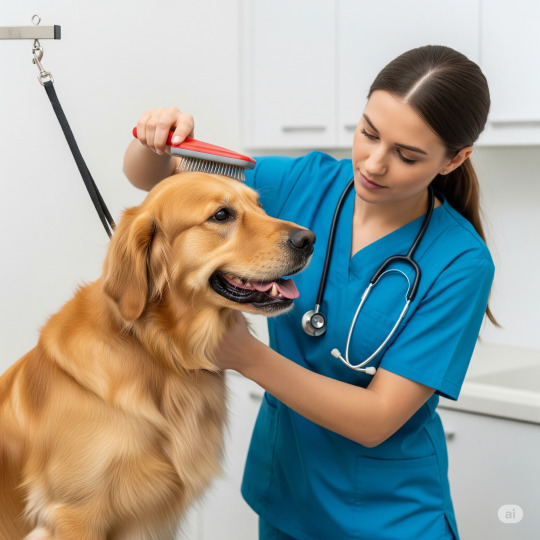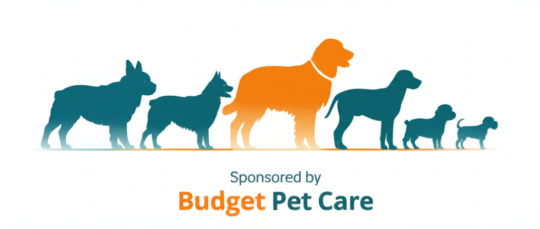#flea and tick prevention for dogs
Explore tagged Tumblr posts
Text
Anaplasmosis in Dogs

Anaplasmosis is one of the many infections that ticks may spread to dogs. If left untreated, this illness will deteriorate and create serious health issues. This blog contains all of the important facts you need to know about this lesser-known dog condition.
#ourpetwarehouse#Anaplasmosis in Dogs#dogs#dogs health#tick borne disease in dogs#lyme disease in dogs#Frontline Plus for dogs#Bravecto Chewables foe dogs#Nexgard Chews for dogs#flea and tick prevention for dogs
0 notes
Text
today at work we had a dog that my coworkers pulled what had to be at least 50 ticks off of and just. jesus christ. how do you have a pet and not notice or do anything when theyre that covered in parasites. it astounds me
#jesus christ do you never even so much as Look at your dog?????#like to me finding 1 (one) tick on my pet is too many. finding more than one tick on my pet? thats is extreme concern.#going into the double digits??? having so many that you LOSE COUNT???????#anyways. i do try to be nonjudgemental esp bc we do see a lot of lower income clients but that isn't lower income thats just cruelty imo#anyways! its summer! check your pets for fleas & ticks! use flea & tick prevention (ideally year round depending on your climate)#and dont be forgetting heartworm prevention. all it takes is one mosquito biting your dog! heartworms are about as bad as they sound btw!!#abby.txt
2 notes
·
View notes
Text
Power Pulse Magazine x Budget Pet Care Partnership
“Paw-tect Your Pet This Summer with Budget Pet Care’s Exclusive Biting Season Savings”
Category: Pets & Lifestyle

Affiliate Disclaimer: This article contains affiliate links. We may earn a commission if you purchase through our partner Budget Pet Care — at no extra cost to you.
Summer is here—and so are the fleas, ticks, and biting pests! As temperatures rise, so does the risk of harmful parasites threatening your pet’s health. But don't worry—Power Pulse Magazine has teamed up with Budget Pet Care to help you protect your furry friends with an exclusive 12% OFF summer deal on trusted parasite protection products, including Nexgard, Simparica Trio, Revolution Plus, and more!
Why Summer is the Biting Season
Longer days and warmer weather mean more time outdoors—be it walks in the park, beach trips, or backyard adventures. Unfortunately, this is also peak season for:
Fleas & ticks
Mosquito-borne illnesses
Mites and internal parasites
These tiny intruders can lead to serious health problems like Lyme disease, tapeworms, mange, and even heartworm. That’s why staying on top of prevention is crucial.
Vet-Recommended Protection — Now at a Summer Discount
From once-a-month chewables to spot-on treatments, Budget Pet Care stocks all the trusted names:
Nexgard – Powerful flea & tick chewable for dogs
Simparica Trio – Triple-action protection: fleas, ticks, AND heartworms
Revolution Plus – All-in-one topical for cats
Bravecto, Heartgard, Advantage, Frontline and more…
Why Shop with Budget Pet Care?
Lowest Prices Guaranteed
No Prescription Required for Some Products
Safe & Trusted Brands Only
Free Shipping Worldwide
Autoship Options to Never Miss a Dose
Biting Season is Here—Save Big Today

Your pets depend on you to keep them healthy and happy. This summer, give them the protection they need without biting into your wallet. Thanks to our Power Pulse Magazine x Budget Pet Care partnership, summer savings have never been this paw-some.
Click the Link & Shop Now → BudgetPetCare and USE Code: SUMMER12 at checkout to get 12% OFF + FREE Shipping Sitewide to save.
@budgetpetcare
Because nothing says love like protection, comfort, and peace of mind.
#powerpulsemagizine#petcare#BudgetPetCare#SummerPetTips#flea and tick prevention#pet health#dog care#cat care#Nexgard#Revolution Plus#SimparicaTrio#petdeals#affiliatedeals#freeshipping#petlovers#bitingseason
0 notes
Text
Where Can I Get Bravecto for Dogs in 2024? Here is the Surprising Answer!
As a pet owner, keeping your furry friend safe from fleas and ticks is crucial. But where can you find the Bravecto Dog Chewables to fight these pests? You can buy Flea and Tick Treatment for Dogs from your vet or an Online Pet Pharmacy. This guide will give you the info you need. Table of ContentsKey TakeawaysWhat is Bravecto?Benefits of Bravecto for DogsConsulting Your VeterinarianFinding a…
#12-Week Protection#Alternatives to Bravecto#Authorized Retailers#Bravecto Active Ingredient#Bravecto Dosage for Dogs#Bravecto for Dogs#Bravecto Ingredients#Bravecto Reviews#Bravecto Side Effects#Bravecto Vet Locator Tool#Chews for Dogs#Consulting Your Veterinarian#Customer Ratings#Dog Flea Control#Dog Parasite Prevention#Fast-Killing Flea and Tick Treatment#Flea Allergy Dermatitis#Flea and Tick Medications for Dogs#Flea and Tick Treatment for Dogs#Fluralaner#Isxoxazoline Class#Nervous System#NexGard#Online Pet Pharmacy#Pet Medication#Safe Flea Treatment for Dogs#Safe Flea Treatment for Dogs and Parasite Prevention for Pets#Ticks#veterinarian
0 notes
Text
What Does Revolution Do for Dogs?
When it comes to protecting our beloved pets from pesky parasites, ensuring we use the right product is paramount. One popular option is Revolution for dogs, known for its wide range of protections against various parasites. But what exactly does Revolution do for dogs? This comprehensive article aims to provide you with all the information you need to understand its benefits, application, safety, and more.
Understanding Revolution
What is Revolution?
Revolution is a topical medication designed to protect dogs from a variety of parasites, including fleas, ticks, heartworms, ear mites, and sarcoptic mange. It is applied to the skin and absorbed into the bloodstream, offering systemic protection.
Key Ingredients
The active ingredient in Revolution is Selamectin. This compound is effective against a broad spectrum of internal and external parasites, ensuring your dog remains healthy and parasite-free.
How It Works
Upon application, Selamectin is absorbed through the skin and enters the bloodstream. It then targets and kills parasites by disrupting their nervous system, leading to paralysis and death. Additionally, it prevents heartworm disease by eliminating the immature stages of the heartworm.
Benefits of Using Revolution
Comprehensive Parasite Protection
Revolution offers protection against a wide range of parasites, including fleas, ticks, heartworms, ear mites, and sarcoptic mange. This makes it a versatile and convenient choice for pet owners.
Ease of Application
Applying Revolution is simple and stress-free. The medication comes in a pre-measured tube, making it easy to apply the correct dose directly to your dog's skin.
Long-Lasting Effects
One application of Revolution provides protection for an entire month, ensuring continuous defense against parasites without the need for frequent reapplications.
Safety Considerations
General Safety of Revolution
Revolution is generally safe for dogs when used as directed. It is approved by the FDA and has been extensively tested to ensure its safety and efficacy.
Potential Side Effects
Some dogs may experience mild side effects, such as temporary hair loss at the application site, mild skin irritation, or digestive upset. These side effects are usually transient and resolve on their own.
Age and Weight Considerations
Revolution is safe for use in dogs as young as six weeks old. It is important to use the correct dosage based on your dog's weight to ensure safety and effectiveness.
Application Process
Step-by-Step Guide to Applying Revolution
Prepare the Area: Choose a quiet, comfortable space for application.
Open the Tube: Hold the tube upright and press the cap down to puncture the seal, then remove the cap.
Apply the Medication: Part your dog's hair at the base of the neck, between the shoulder blades. Squeeze the contents of the tube directly onto the skin.
Allow to Dry: Let the medication dry completely before allowing your dog to get wet or bathe.
Tips for Effective Use
Apply Revolution on a monthly basis for continuous protection.
Ensure the application site is clean and dry before applying.
Avoid contact with the medication until it has dried completely.
Comparing Revolution with Other Products
Comparison with Topical Treatments
Revolution's broad-spectrum protection sets it apart from many other topical treatments, which may only target specific parasites.
Comparison with Oral Medications
While oral medications provide systemic protection, they often require a prescription and may be more difficult to administer to picky eaters. Revolution's topical application can be more convenient for some pet owners.
Comparison with Natural Remedies
Natural remedies may offer some level of protection but often lack the potency and reliability of products like Revolution, which are backed by scientific research and testing.
Veterinary Recommendations
What Do Vets Say About Revolution?
Veterinarians often recommend Revolution for its effectiveness and ease of use. It is a trusted product in many veterinary practices for comprehensive parasite prevention.
Clinical Studies and Findings
Clinical studies have demonstrated the efficacy of Revolution in preventing and treating various parasitic infections. Its safety profile has been well-established through rigorous testing.
User Reviews and Experiences
Positive Reviews
Many pet owners praise Revolution for its ease of use and effectiveness. They report fewer instances of fleas, ticks, and other parasites, contributing to their dogs' overall health and well-being.
Negative Reviews
Some users have noted mild side effects, such as skin irritation or temporary hair loss at the application site. However, these cases are relatively rare.
Overall User Satisfaction
Overall, revolution tick and flea for dogs enjoys high user satisfaction, with most pet owners finding it a reliable and convenient solution for parasite prevention.
Potential Side Effects
Common Side Effects
Temporary hair loss at the application site
Mild skin irritation
Digestive upset
Rare Side Effects
Severe allergic reactions
Excessive itching or discomfort
What to Do If Side Effects Occur
If you notice any side effects, discontinue use and consult your veterinarian. They may recommend an alternative treatment or provide additional care instructions.
Alternatives to Revolution
Other Commercial Flea and Tick Treatments
Spot-on treatments
Oral medications
Flea collars
Natural Alternatives
Essential oils
Herbal sprays
Diatomaceous earth
Preventive Measures
Regular grooming
Frequent vacuuming
Maintaining a clean living environment
Environmental Impact
Impact of Revolution on the Environment
While effective, some chemicals in parasite treatments can impact the environment. Proper disposal of used products and packaging is essential.
Eco-Friendly Alternatives
Consider natural flea and tick repellents if you are concerned about environmental impact. These options are less likely to harm the ecosystem.
Cost Analysis
Cost Comparison with Other Treatments
Revolution is often more affordable than some other commercial flea and tick treatments, providing a cost-effective option for many pet owners.
Long-Term Cost Effectiveness
Due to its long-lasting effects, Revolution can be a cost-effective solution over time, reducing the need for frequent reapplications.
Myths and Misconceptions
Common Myths About Flea and Tick Treatments
Natural remedies are always safer
Flea and tick treatments are harmful to pets
You only need to treat for fleas and ticks in summer
Debunking Myths About Revolution
Revolution is tested for safety and effectiveness
Proper use minimizes any risks
Year-round prevention is crucial for protecting your dog
Conclusion
In summary, Revolution is a safe and effective option for comprehensive parasite prevention in dogs. Its ease of use, long-lasting effects, and veterinary recommendations make it a popular choice among pet owners. Always follow the product's instructions and consult with your vet to ensure the best care for your furry friend.
FAQs
1. What are the signs of an allergic reaction to Revolution? Signs of an allergic reaction include excessive itching, swelling, redness, or difficulty breathing. If you notice any of these symptoms, seek veterinary care immediately.
2. How can I tell if Revolution is working? You should see a reduction in fleas and ticks on your dog within a few days of application. Regular use will help maintain this protection.
3. Can I use Revolution in conjunction with other flea treatments? It is best to consult your vet before combining treatments to avoid potential adverse reactions.
4. Is it safe to use Revolution on cats? No, Revolution is specifically formulated for dogs and should not be used on cats. Revolution for cats is available and should be used instead.
5. Where can I buy Revolution? Revolution is available at most pet stores, veterinary clinics, and online retailers.
0 notes
Text
#cat food#cat treats#wet food#veterinary food#catnip treats#flea & tick prevention#pets scratchers#dry food#dogs food#kitten food#pets supplies#dog collars#dog leashes#dog toys#dog training treats#pets food#fish food#small pet food#puppy food
0 notes
Text
Nexgard for Dogs: Easy and Effective Flea & Tick Prevention at Best Prices
Worried about fleas and ticks bugging your furry friend?
Nexgard for Dogs is the answer! This tasty chewable offers:
Fast & Effective Flea & Tick Control: Kills fleas within 8 hours and ticks within 48 hours. ️
Long-lasting Protection: Keeps your pup itch-free for a full month!
Easy to Use: Just give them a delicious chew – most dogs love it!
Want to learn more? Check out the Nexgard here: https://bit.ly/3xUgmnG
Top Searches for Nexgard for Dogs: nexgard for dogs price nexgard for dogs nexgard for dogs without vet prescription how much is nexgard for dogs nexgard for dogs ear mites cheapest nexgard for dogs heartgard and nexgard for dogs price of nexgard for dogs bravecto vs nexgard for dogs cost of nexgard for dogs
#nexgard for dogs#cheap nexgard for dogs#flea treatment for dogs#tick treatment for dogs#best flea and tick medicine for dogs#safe flea and tick medication for dogs#how to prevent fleas and ticks on dogs#oral flea and tick prevention for dogs
0 notes
Text
My vet: So is Ollie going to be an indoor or outdoor cat?
Me: Indoor, but I will be taking him outside on leashed walks. No free-roaming, only supervised walks.
Vet: Okay, so we'll be giving him a preventative treatment for fleas and ticks, but he likely won't need a rabies vac-
Me: I would like him to have the rabies vaccine
Vet: Fantastic. And we also offer vaccinations for-
Me: Yes. We'll take all the vaccines that you have.
Vet: Well if he's not free-roaming, he'll likely never come in contact with-
Me: All the vaccines that you have
Vet: I mean we can do that but it'll be a six month plan, and it'll be a hassle for you to bring him in and pay for that many treatments, especially with how unlikely some of these diseases are
Me: My cousin was eaten by alligators, my uncle was almost taken out by a beaver, everyone in my family has been divorced once and married twice minimum over the past four generations, every family line I have has been kicked out of their country of origin, and my immediate family has experienced three divorces, four marriages, seven parents, three international moves, two missing persons incidents, two house fires, a tornado, two car collisions, one of which involved a semi truck that leveled the car, two sewage drain backfloods in two different houses, a wolf attack, two con artists, a pyramid scheme, two autoimmune diseases, three congenital deformities, one incident of bacterial meningitis, three medical quarantines, sepsis, and the sudden deaths and disappearances of eight dogs, thirteen cats, three guinea pigs, four consecutive sheep named Dorothy, thirty-two rabbits, a rooster, two ducks, four hamsters, nine fish, four cockateels, a parrot, a llama, and a bear
Me: We will take all the vaccines that you have
#Life comes at you fast I guess#Teaboot#With our luck I'll be hit by a bus and he'll be sent to some freeroamer owner#I want him to be protected from EVERYTHING
4K notes
·
View notes
Text
Simparica Trio vs. NexGard Spectra - Comparison between two best dog medicines.

#ourpetwarehouse#dogs health#simparica trio#Simparica Trio vs Nexgard Spectra#Nexgard Spetcra#Flea and Tick treatments#Parasites Prevention for dogs
0 notes
Text
Heartworm Tick and Flea Prevention for Dogs - Atlas Pet Hospital
Atlas Pet Hospital prioritizes the health of your dogs with effective heartworm, tick, and flea prevention for dogs, measures. Specialized preventive treatments safeguard against these parasites, preventing potentially severe health issues. Regular administration ensures a protective shield, promoting your dog's well-being and creating a safe environment for a happy and active lifestyle.
#heartworm tick and flea prevention for dogs#parasite treatment for dogs#dog parasite treatment#preventing worms in dogs#worm prevention in dogs
0 notes
Text
Dog Care Tips for Summer: Keep Your Canine Friend Cool and Happy!
🐾🌞 Keep your furry friend safe this summer! Learn essential dog care tips to beat the heat and ensure a wagging tail all season long. 🐶❤️ #DogCareTips #SummerSafety #HappyPup 🌊🏖️
As summer arrives, it’s essential to pay extra attention to the well-being of our furry friends. The hot weather can pose various challenges and risks for dogs, including dehydration, heatstroke, paw pad burns, and more. In this article, we will provide you with valuable dog care tips to ensure your canine companion stays safe, healthy, and happy during the summer months. Importance of Hydration…

View On WordPress
#Dog Care Tips#Dog health in summer#Grooming tips for summer#Keeping dogs cool#Paw pad protection#Preventing fleas and ticks in summer#Preventing heatstroke in dogs#Recognizing signs of heat exhaustion in dogs#Safe outdoor activities for dogs#Summer dog care
0 notes
Note
I appreciate you starting a conversation about the harms of homeopathy, and I just want to mention that homeopathy/alternative medicine is also largely BS when it comes to treating our pets. A lot of essential oils and herbal remedies are toxic to cats and dogs even in small quantities, but people still try using them as flea and tick prevention because they don’t want to use “toxic” medicine that actually works. CBD isn’t FDA approved for dogs because it’s not been proven to be effective and safe, but a lot of folks have pushed me to try it for my dog because he’s on medication for extreme anxiety. Some folks will seek out animal chiropractors to “treat” their dog’s IVDD or hip dysplasia instead of pursuing pain management or surgical treatment. People think that vets look at their pets and see dollar signs instead of an animal needing treatment and turn to snake oil salesmen instead. It’s maddening.
Yeah that makes me fucking crazy.
@drferox and @why-animals-do-the-thing are great resources on tumblr who have spent a ton of time discussing animal woo in the past; both have slowed down on posting because life is hard and tumblr is tumblr, but both have done a lot of excellent writing about things like animal training, raw pet food, vaccination, and how to be a good human to your pets. If you've got questions about animals, search their archives and you're probably going to find a ton of useful information.
Folks, I swear veterinarians aren't coming for your wallets and they are generally criminally under-compensated for the work that they do. They're brilliant professionals who are driven by passion and fucked by the market.
Sorry i went to go find some studies on dogs and cbd and i ended up finding a reprint of a small study from the american holistic veterinary medical association and I found this on the pdf and i'm going to murder somebody

for those who are not aware young living is an essential oil mlm largely targeting mormon housewives that was started by a man whose child died being drowned at birth in an at-home-water-birthing incident and who himself likely died of cancer he tried to treat with essential oils.
This is one of those things that's like a big flashing neon sign that the study/journal you're looking at is a hot pile of bullshit.
Anyway. Yeah. Research supporting the safety and effectiveness of CBD on dogs is pretty thin on the ground. Your pets depend on you. The choices you make determine their health and wellbeing.
Listening to woo-peddlers who tell you not to vaccinate, or who hype up untested "healthy grain free diets," or who promote and sell cbd in absence of evidence of its effectiveness is putting your pets hands in the health of someone who doesn't care about your pet, they just care about profit.
Also, while I'm here: don't feed your dog grain free foods unless they have a diagnosed allergy, grain free foods can lead to liver and kidney problems, dogs are more omnivorous, not obligate carnivores like cats and grain is not bad for their diet nor unnatural for them to eat, and there are very few brands that have done decades of feeding tests on dogs (Royal Canin, Hills Science Diet, Pedigree, Eukanuba, and Iams) and none of them are Blue Buffalo.
Appeals to nature are extremely common in online woo discussions of pet food and vet care. Your dog is not a wolf and does not need to eat like a wolf. Your cat is not a lion and does not need to claim territory like a lion.
Vaccinate your pets, don't let them wander, feed them tested diets, and listen to your vet's advice on their care.
238 notes
·
View notes
Text
The Top 3 Dog Breeds Everyone Should Own
Category: Pets & Lifestyle

Because Life’s Better with a Loyal Companion by Your Side
Sponsored by Budget Pet Care
Dogs aren’t just pets—they’re family, therapists, workout buddies, and the ultimate mood boosters. Whether you’re an urban explorer, a suburban homebody, or someone who just wants unconditional love, here are the top 3 dog breeds that check every box—and steal every heart.
1. Golden Retriever – The Gold Standard of Dogs

Golden Retrievers are the poster pups of loyalty and joy. Known for their friendly temperament, high intelligence, and love of people (and puddles), these beauties thrive in family environments. Whether you’re throwing a frisbee or binge-watching Netflix, a Golden is the ideal companion.
Why You’ll Love Them:
Super affectionate and gentle with kids
Easy to train and eager to please
Low drama, high tail-wag ratio
2. Border Collie – The Genius in Fur

If dogs had Ivy League schools, Border Collies would graduate summa cum laude. These brainy bundles of energy are best suited for active owners who love outdoor adventures or mental challenges.
Why You’ll Love Them:
Top-tier intelligence and trainability
Insanely energetic and loyal
Ideal for agility sports or fun tricks
3. French Bulldog – Small Pup, Big Personality


City dwellers, rejoice. The Frenchie is compact, charming, and absolutely hilarious. With their expressive faces and low-maintenance needs, French Bulldogs bring personality in a pint-sized package.
Why You’ll Love Them:
Great for apartments or small homes
Low exercise needs but big on affection
No barking drama—just love
Special Offer: Protect Your Pup from Ticks & Fleas

Budget Pet Care has your back (and your dog’s). Right now, when you buy 6 doses of Advantage for Dogs, you’ll get 2 free—because nothing should come between your dog and a healthy life.
Budget-friendly. Vet-trusted. Dog-approved.
SCAN & SAVE TODAY
Scan the QR code below to claim this limited-time deal and keep your best friend itch-free all year long!

Pulse Magazine
Where pets meet lifestyle. Live better. Wag more.
This article is sponsored by Budget Pet Care. Some links in this post are affiliate links, meaning if you click through and make a purchase, Pulse Magazine may earn a commission—at no extra cost to you. We only recommend products we trust for our readers and their furry friends.
#top dog breeds#pet lovers#golden retriever#border collie#french bulldog#powerpulsemagizine#petcaretips#budgetpetcare#flea and tick prevention#dog health#dogbreedguide#sponsored content#affiliate program#advantage for dogs#pet wellness#pet products
0 notes
Note
Hello, I have an outdoor cat. That's something I type nervously as people tend to paint such a person as an irredeemable sinner with a special circle of hell waiting for them - I made the mistake of reading the comments. The more people are rude and righteous about it, the more I am inclined to ignore them. However, I saw one of your recent posts about the dangers of letting your cat outside. I was wondering what diseases and parasites are outdoor cats likely to get? You can give them preventative treatment for worms (round and heart), fleas and ticks. You can immunise them against cat flu, feline infectious enteritis and feline leukaemia virus. And you can spay/neuter to avoid kittens. Are there other diseases my cat is likely to get from going outside? I do think it is a very strong argument for not letting your cat out to protect the local wildlife and something I am strongly considering since she caught a bat. I restricted her to not going out from dusk during summer after that. The other arguments don't really feel all that strong to me - there aren't other dangerous predators around (unless you count dogs or foxes and I have only heard of a fox harming a cat once in my life). She is very unlikely to get killed in traffic where we are so that's low risk enough for me to discount it.
well, the big ones are FIV, FTP (distemper), rabies, and any number of cat-specific rhinoviruses. parasites like tapeworms and toxoplasmosis are also a concern, and a major issue is that free roaming cats can easily ingest lethal levels of poisons by doing things like drinking from puddles of antifreeze, or eating rodents that are dying of rat poison.
another real and pressing danger to outdoor cats is. outdoor cats. cats fight each other all the time, and fights can often result in some pretty gnarly injuries. the kind that cost big bucks at the emergency vet to fix, if your cat is lucky enough to make it home afterwards.
also, humans are terrible! strays and free-roaming cats end up picked up for use as bait cats or just harmed for funzies all the time.
and if any of these things happen to your cat, you probably won't ever know for sure. your cat just won't come home one day, which is what happens to the vast majority of outdoor cats eventually. it's often more a question of when than if.
#don't be dicks in the notes please I mean it#also a lot of the bones that turn up on the animal identification reddits I frequent are cat bones
293 notes
·
View notes
Text
I'm fascinated by people on here who talk about hole all the time and post their blorbos and lil anime girls who eat each other or whatever (normal standard stuff of course) and then you find out they're theoretical physicists and nurses and employed by actual NASA. That's crazy that we're all just out there in the real world together. Maybe that normal ass man that looks like a woman at the grocery store is tumblr user femboyhunting, who posts drawings of twinks putting cigarettes out on eachother. What if you brought in your dog for a regular check up and yearly flea and tick preventative and I'm your vet tech? What would you do? Could you handle it? I think I'd have to perish right there on the spot.
93 notes
·
View notes
Text
many of my dog friends are dealing with their first ever ticks this year so please take this as a reminder if you're in north america to get your dog on flea/tick preventative and check them regularly!!!
#unfortunately ticks sre going to be one of the noticeable impacts of climate change#with winters no longer cold enough to kill them and more abundant fires (and early succession veg) encouraging more deer rabbit and moose#which are tick spreading species#i prefer oral preventatives because topical are subject to absorption and can be diluted with lots of swimming#(caveat tick preventatives kill ticks on first bite so you may still find ticks on your dog. but dead ticks are easier to deal with.)#ticks are everywhere btw not just in the wild#people are picking them up in the city from sidewalk walks#it happens#check your dogs (pets) and get them on preventatives#we used to pick up hundreds each hike when we lived in saskatchewan so im past the ick factor at this point#but seriously even if your area was never at risk before - you are likely to be at risk in the next 2-5 years. sorry.
48 notes
·
View notes